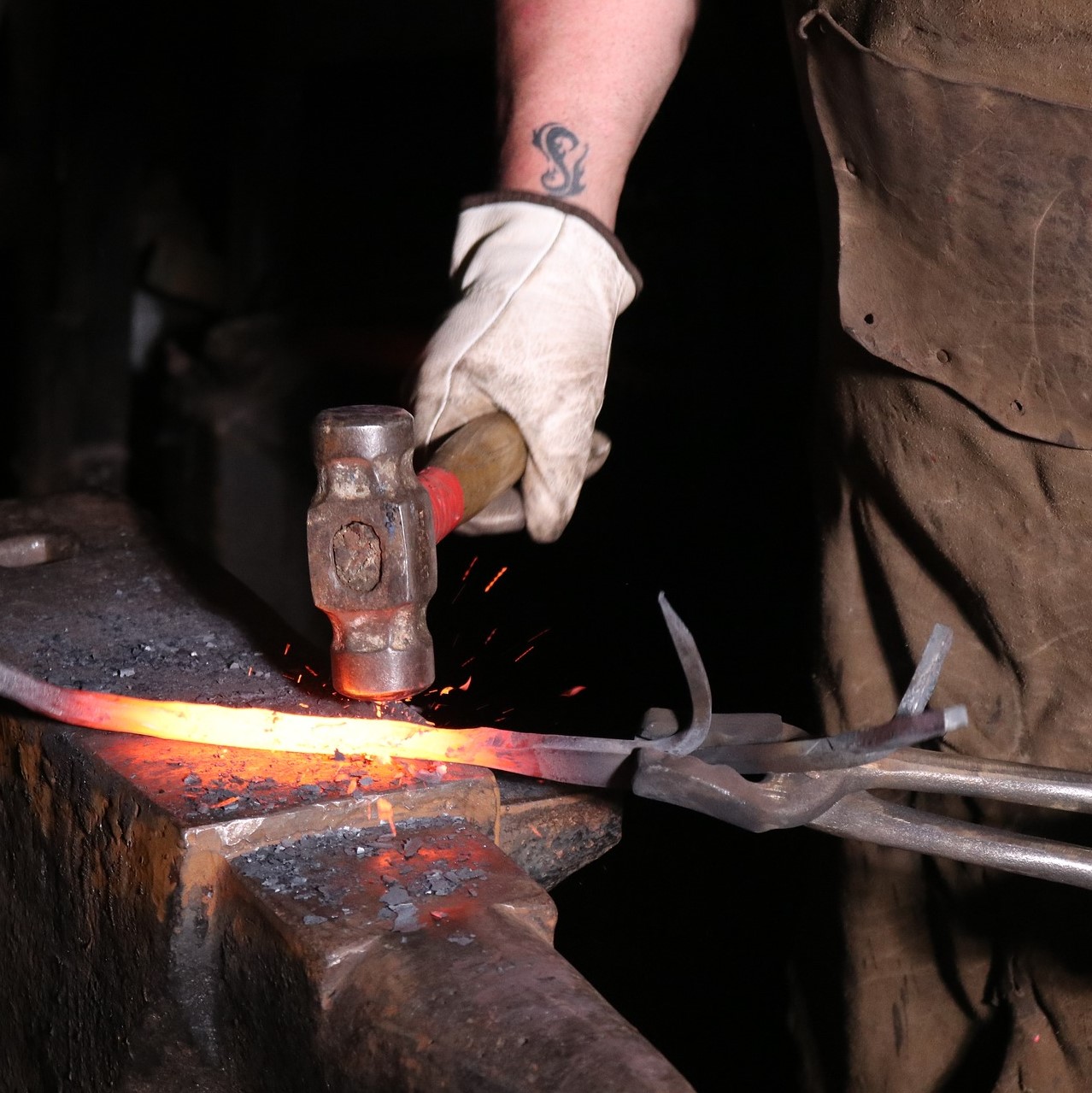St Dunstan is not strictly connected to the history of Hunsdon Church, but since the building is now dedicated in his name, it seems appropriate to mention him.
Throughout most of its past, Hunsdon Church has simply been known as Hunsdon Parish Church, with occasional instances where it appeared to be dedicated to St Mary.[1] After the break from Rome and the beginning of the Protestant Reformation in the 1530s, all reference to the Virgin Mary seems to have disappeared from wills and the church was described simply as Hunsdon Parish Church.[2] However, in the 19th century, the church was dedicated to St Dunstan; Rev Spencer Nairne, with little real evidence, believed the church had been dedicated to Dunstan in the past and so decided to rededicate it.[3]
Dunstan was born in the reign of Edward the Elder (King of Wessex) in about the year 909 AD near Glastonbury, a place with which he maintained a strong connection throughout his life.[4] Dunstan is not particularly well-known in common knowledge, but one of the better-known stories about him is that he tweaked the devil’s nose with a pair of metalworking tongs![5] However, Dunstan was a crucial political figure in the 10th century and played a key part in the revival of monasticism and the increased strength of the Church within this period. In fact, not only was he crucial, ‘it has been well said that if the 10th century gave shape to English history, Dunstan gave shape to the 10th century.’[6]
As a young boy, Dunstan was ‘skilled in design and painting, a craftsman in jewellery and metalwork, and a lover and accomplished performer of both music and poetry.’[7] He was also the nephew of Athelm, the Archbishop of Canterbury, and this allowed him access to Æthelstan’s court (King of Wessex), where he spent a lot of his time growing up and received a lot of his education.[8] Æthelstan’s court was rich in culture and was heavily influenced by 9th century Carolingian resources, with the Carolingian court being renowned for its learning and culture. This education and introduction into court and political life would be instrumental in Dunstan’s success in later years.
At about the age of 25, Dunstan became a monk at Winchester, following expulsion from Æthelstan’s court after he was falsely accused by fellow courtiers who were jealous of him.[9] With the death of Æthelstan and the accession of his half-brother Edmund, Dunstan reappeared at court. However, his fellow courtiers once again worked against him, with the king ordering him to be ‘stripped of every office and also deprived of every honour.’[10] This time, as Dunstan was preparing to go into exile for fear of his life, King Edmund almost fell off a cliff while hunting and in the moment where he believed he was going to die he repented of the way he had treated Dunstan. As a result, there was a public reconciliation between the two men and Dunstan was appointed the Abbot of Glastonbury.[11] Under Dunstan’s rule, Glastonbury flourished and became a wealthy centre of learning and religious life. By 1086, when the Domesday Book was written, Glastonbury had become the wealthiest abbey in England.[12]
When Eadred, Edmund’s brother, became king in 946 AD Dunstan began to emerge ‘as a figure of considerable political importance’.[13] He was close friends with the king and gained position as treasurer to the king, a position that was somewhat like later chancellors, giving Dunstan the opportunity to advise the king on many matters, both spiritual and secular.[14] However, at the accession of Edwy in 955 AD, Dunstan became the target for hatred from Edwy’s new queen, after Dunstan forced Edwy to put his duty before his pleasure at his coronation banquet.[15] In 956 AD, Dunstan fled abroad after losing his property and titles, fearing for his safety.[16]
During Edwy’s reign he lost popularity with many of his courtiers and the kingdom of Wessex was divided, with his brother Edgar ruling half of it.[17] Edgar recalled Dunstan from exile in 957 AD and soon after, Dunstan was ordained bishop.[18] With the death of Edwy in 959 AD, Edgar reunited the kingdom of Wessex and appointed Dunstan Archbishop of Canterbury.[19] It was with this appointment that Dunstan was able to really embark on his policy of monastic renewal. Throughout this period Dunstan, with other reformers, were aiming to raise the standards of secular clergy, increase the interest of the laity in the Church and revive monasticism throughout England.[20]
On Saturday 19 May 988 AD, after about 28 years of serving as Archbishop of Canterbury, Dunstan died.[21] Previously, his chaplain had seen a vision in which angels came to summon Dunstan to heaven on Ascension Day, but he demurred, ‘protesting his pastoral duty to his church on such a day.’[22] This vision demonstrates Dunstan’s commitment to his church and his people, and he was remembered as approachable and well-loved. After gaining a visionary and prophetic reputation during his own lifetime, the ‘cult of Dunstan as a saint sprang up almost immediately after his death’.[23]
Research by Amber Dunstan
[1] Hunsdon Local History Society, Hunsdon and Widford: A Local History (1979) p. 14.
[2] Ibid.
[3] Ibid, p. 50.
[4] Douglas Dales, Dunstan: Saint and Statesman (Cambridge: Lutterworth Press, 1988) pp. 3, 9.
[5] Ibid, p. 23.
[6] Ibid, p. 147.
[7] Ibid, p. 12.
[8] Ibid, p. 18.
[9] Ibid, p. 19
[10] Ibid, p. 25.
[11] Ibid.
[12] Dales, Dunstan, p. 65.
[13] Ibid, p. 36.
[14] Ibid.
[15] Ibid, p. 42.
[16] Ibid.
[17] Ibid, p. 47.
[18] Ibid.
[19] Ibid, p. 48.
[20] Ibid, pp. 56-63.
[21] Ibid, p. 108.
[22] Ibid.
[23] Ibid, pp. 107, 148.

Comments are closed